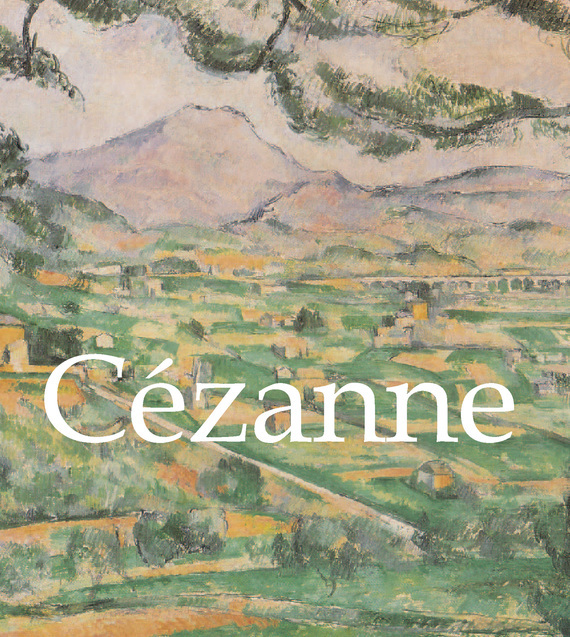Электронная книга: Nathalia Brodskaya «Cézanne»

|
Серия: "Mega Square" Since his death 200 years ago, Cézanne has become the most famous painter of the nineteenth century. He was born in Aix-en-Provence in 1839 and the happiest period of his life was his early youth in Provence, in company with Emile Zolá, another Italian. Following Zolá’s example, Cézanne went to Paris in his twenty-first year. During the Franco-Prussian war he deserted the military, dividing his time between open-air painting and the studio. He said to Vollard, an art dealer,“I’m only a painter. Parisian wit gives me a pain. Painting nudes on the banks of the Arc [a river near Aix] is all I could ask for.” Encouraged by Renoir, one of the first to appreciate him, he exhibited with the impressionists in 1874 and in 1877. He was received with derision, which deeplyhurt him. Cézanne’s ambition, in his own words, was “to make out of Impressionism something as solid and durable as the paintings of the museums.” His aim was to achieve the monumental in a modern language of glowing, vibrating tones. Cézanne wanted to retain the natural colour of an object and to harmonise it with the various influences of light and shade trying to destroy it; to work out a scale of tones expressing the mass and character of the form. Cézanne loved to paint fruit because it afforded him obedient models and he was a slow worker. He did not intend to simply copy an apple. He kept the dominant colour and the character of the fruit, but heightened the emotional appeal of the form by a scheme of rich and concordant tones. In his paintings of still-life he is a master. His fruit and vegetable compositions are truly dramatic; they have the weight, the nobility, the style of immortal forms. No other painter ever brought to a red apple a conviction so heated, sympathy so genuinely spiritual, or an observation so protracted. No otherpainter of equal ability ever reserved for still-life his strongest impulses. Cézanne restored to painting the pre-eminence of knowledge, the most essential quality to all creative effort. The death of his father in 1886 made him a rich man, but he made no change in his abstemious mode of living. Soon afterwards, Cézanne retired permanently to his estate in Provence. He was probably the loneliest of painters of his day. At times a curious melancholy attacked him, a black hopelessness. He grew more savage and exacting, destroying canvases, throwing them out of his studio into the trees, abandoning them in thefields, and giving them to his son to cut into puzzles, or to the people of Aix. At the beginning of the century, when Vollard arrived in Provence with intentions of buying on speculation all the Cézannes he could get hold of, the peasantry, hearing that a fool from Paris was actually handing out money for old linen, produced from barns a considerable number of still-lifes and landscapes. The old master of Aix was overcome with joy, but recognition came too late. In 1906 he died from a fevercontracted while painting in a downpour of rain. Издательство: "Parkstone International Publishing"
ISBN: 978-1-78160-956-9, 978-1-78042-205-3 электронная книга |
Другие книги автора:
| Книга | Описание | Год | Цена | Тип книги |
|---|---|---|---|---|
| Cassatt | Mary est nee a Pittsburgh. Son pere etait un banquier tres liberal en matiere d'education, et toute la famille semblait manifester une certaine sympathie pour la culture francaise. Mary n'avait pas… — Sirrocco Publishing, (формат: 145x160, 256 стр.) Подробнее... | бумажная книга |
См. также в других словарях:
CÉZANNE (P.) — La popularité de Cézanne n’a probablement jamais été aussi grande qu’un siècle après la première grande exposition que lui consacra son marchand, Ambroise Vollard, en 1895, et qui le révéla véritablement à ses contemporains. La reconnaissance… … Encyclopédie Universelle
Cézanne — [se zan], Paul, französischer Maler, * Aix en Provence 19. 1. 1839, ✝ ebenda 22. 10. 1906; ging nach kurzem Jurastudium 1861 nach Paris. Als Maler bildete er sich v. a. durch das Studium der klassischen und barocken Meister im Louvre (N.… … Universal-Lexikon
Cézanne — Cézanne, Paul … Enciclopedia Universal
Cézanne — (Paul) (1839 1906) peintre français. Proche des impressionnistes, il construit par la couleur et non par la lumière, superposant des plans rythmés par la géométrie: série de la Montagne Sainte Victoire. Son art annonce le cubisme et les grands… … Encyclopédie Universelle
Cézanne — Cézanne, Paul (1839 1906) a French ↑impressionist painter, who helped to develop post impressionism and who influenced the development of ↑cubism and ↑abstract art … Dictionary of contemporary English
Cézanne — Porté dans les Hautes Alpes, c est sans doute un toponyme. On peut penser à la commune de Sézanne (51), mais ça fait un peu loin ! Mieux vaut envisager une francisation de l italien Cesana, nom d une commune du Piémont (Cesana Torinese, dans la… … Noms de famille
